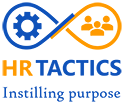Aligning the Workforce – The 4Cs of Performance Management

Performance Management Systems (PMS) are designed to help companies evaluate their employees fairly and efficiently. A PMS will also highlight gaps in organizational policies and processes while aligning employees to the common business goal. There are many facets of a successful PMS that include employee’s strengths, weaknesses, behaviour, task completion, proficiency and much more. With many approaches and philosophies, it might be difficult to define a performance management strategy for your organization and ensure that it covers all the important aspects of a comprehensive PMS. In this blog, we will focus on the 4Cs of PMS that together encompass the major components of an effective performance management system.
The 4Cs of Performance Management
The 4Cs of Performance Management – Collaboration, Connect, Clarity and Character – make a PMS that is complete in every respect. I briefly introduced this concept in my last blog on common queries about performance management. Let’s have a closer look at the 4Cs.

Collaboration
Performance management needs to be viewed as a process and not as a yearly or bi-annual event. The efforts of the employee over the entire evaluation period and beyond culminate in the performance management system. This is why collaboration is central to any PMS. Building a culture of collaboration within the workplace encourages employees to contribute their best towards achieving organizational goals. Individuals may not be inherently collaborative, especially when there is little or no incentive to do so. In the case of performance management, where most organizations take an individualistic approach, an employee might not be motivated to contribute to the team if it doesn’t affect him directly. The need is to value team performance as well as the collaborative skills of the employee.
Apart from only individualistic PMS, some companies also follow a competitive performance rating system. This pits employees against one another rather than being excited to work as a team. It is better to transition to a forward-thinking PMS that is subjective, incorporates one-on-one sessions at regular intervals and values teamwork. Collaboration allows each team member to work according to their strengths and support each other’s weaknesses. This helps in achieving higher standards of quality and ultimately business success.
Connect
Feedback and communication are vital for an organization to grow. It is also important for individuals as well so that they can improve upon their weaknesses and continue to hone their skills. Timely feedback informs employees where they stand concerning their goals and how they can further improve their performance, especially if they are lagging. This communication usually comes from managers, but can also include peers, customers and measurement systems, to make the entire activity more holistic. As performance management is a continuous process, there should be a provision for managers to regularly connect with their team members, one-on-one, provide feedback and also track their performance between these sessions. Feedbacks need to be specific, timely and professional.
- Specific :Pertaining to specific goals and measurable
- Timely:
Before goals are achieved to support corrective action and real-time for positive feedback so that it is effective and valued - Professional
Feedback should be accurate, factual and complete so that it can be taken constructively and not personally
Clarity
To achieve their goals, employees need to understand what is expected of them and what the organization wants to accomplish. Without a clear understanding of their goals, individuals cannot fulfill their job requirements. Therefore, role clarity is one of the drivers of employee performance. Sometimes employees are unsure or clueless about the scope of their work and where they fit in the organization. Clarity not only brings awareness about the employee’s individual roles, but also the roles of colleagues, which can result in better collaboration and increased productivity.
Having a clear idea about one’s work can enable employees to have a sense of freedom within the organizational framework, where they can function freely to achieve their goals. This decreases dependency and increases productivity to affect the overall performance positively. Organizational culture greatly affects communication and clarity and needs to be dealt with swiftly. Lack of role clarity creates confusion and ambiguity, which results in employees not being aligned with the company’s expectations. Setting prioritites and boundaries gives a clear direction to employees regarding their work so that they can play their part in helping the organization succeed.
Character
An individual’s role in the organization is not limited to checklists on a goal sheet. Employees’ traits and behaviour also contribute to an employee’s contribution and must be included in performance management. Attributes like dependability, punctuality, conduct, empathy, agility etc. are all a part of the individual. As a part of the PMS, these qualities of an individual can be assessed and leveraged for better performance and attainment of goals. When included in a formal evaluation system, these characteristics become known to the managers in a better way. With this information, supervisors can allocate responsibilities for which individuals may be better suited, apart from their technical skills. For example, a person with great negotiation skills could be placed for vendor management. A 360-degree approach to performance management enables self-development for employees so that they can advance in their careers and also benefit the organization.
Conclusion
A well-rounded performance management system, based on the 4Cs, appreciates all aspects of an individual’s personality and skills. It provides employees and the organization to regularly check their progress and take action to improve where necessary. PMS also enables companies to plan training based on the actual needs of the employees in line with organizational goals. Performance management, if utilized correctly, can transform an organization by improving productivity and creating a positive work environment.
